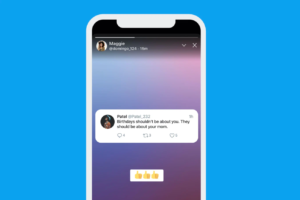 Twitter’s foray into ephemeral social media – Fleets – is going away, less than a year after it was introduced. Fleets, which very closely resembled Instagram Stories, offered a way to share content without it becoming part of your permanent Twitter feed.
Twitter’s foray into ephemeral social media – Fleets – is going away, less than a year after it was introduced. Fleets, which very closely resembled Instagram Stories, offered a way to share content without it becoming part of your permanent Twitter feed.
The service was intended as an attempt to activate part of Twitter’s dormant and quiet user base – and when it first came out, it immediately crashed their servers due to popularity. But eagerness to try a service doesn’t always result in long-term user engagement, as seems to be the case with Fleets. (Think about it – in the last nine months, did you hear about any Fleets going viral?) Instead of helping Twitter increase its daily active user base, TechCrunch reports that “the only people really posting stories as Fleets were already pretty active on the platform.” Twitter, themselves, declined to provide any actual usage numbers.
When discussing the decision to shut down the product, Twitter indicated they wouldn’t shy away from trying additional experiments in the future – a good sign that you have a healthy product team that is supported in its research and development. But it would have been great to see Twitter be a little more open about how Fleets came to be and why it wasn’t successful. The ephemeral-content model may work for Instagram Stories and Snapchat, because their user bases are different – visual storytellers, with less interest in having a dialogue with their followers, versus the Twitter user base that engages more textually and conversationally. And, apparently, with that goes a preference for persistence. It’s a tough hurdle to turn passive users into active ones, and cloning a competitors’ feature may not be the best plan. If they wanted that functionality, they’re likely already active on the competitor’s platform.
If you’re wondering what Twitter is putting in Fleets’ place, the answer is they’re handing all that screen real estate over to their Spaces feature – yes, the audio chat Clubhouse-esque feature they added last year and recently opened up to more users. Will their passive readers become active participants in voice-based Spaces? Only time will tell.